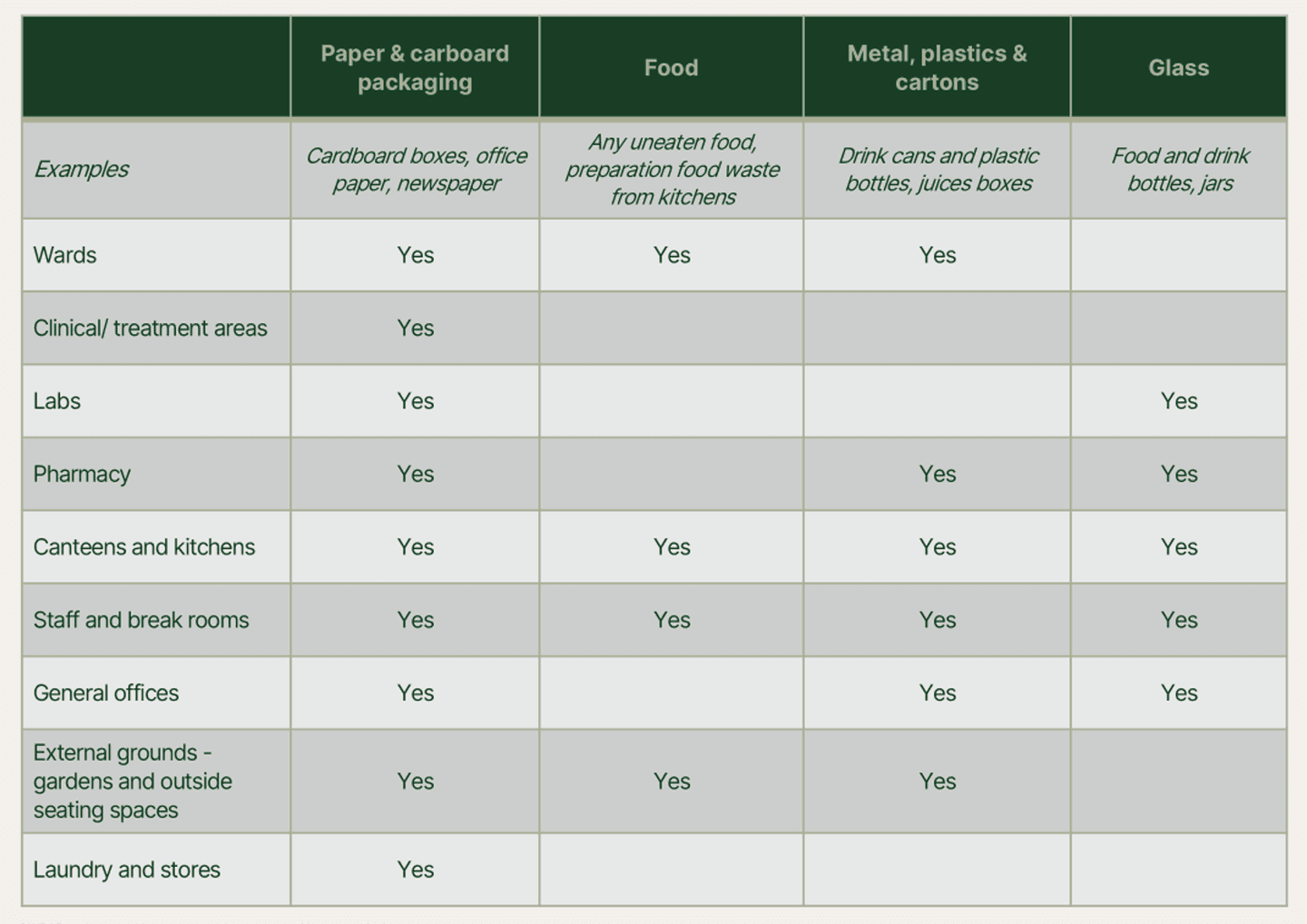It is important that all waste materials are disposed of in the correct waste stream.
Hospitals generate many types of waste including clinical, offensive, and hazardous waste, which need to be managed by a specialised waste collection service, and should already be in place. These waste types do not fall under the workplace recycling law.
Hospitals also generate other waste types, including household-like waste and it is important that all waste materials are disposed of in the correct way.
Any item of recyclable waste placed in the clinical waste stream will cost more to process and will be incinerated rather than recycled into new products. Any hazardous or clinical waste put in the recycling bin could cause health and safety issues to staff handling the waste and external collection staff. It can also contaminate the valuable recyclable materials that would then have to be disposed in a more expensive way.
To understand the areas that produce most of the specified waste it is useful to undertake waste audits. By conducting audits of your waste, quantities and types of bins in use, you will be able to understand the current waste provision across the hospital. It could also show if improvements could be made to your current bin provision and placement, waste services, and help with the new requirements under the workplace recycling law.
A waste audit or review would identify which areas produce high quantities of specified materials. The various departments will produce different waste types in varying quantities, that will require separate collections. Providing the right bins and containers for segregated materials will help reduce contamination levels and costs.
This table shows where the specified wastes are likely to be generated across the site.

It is useful to work with the staff who manage your waste, including collections, to understand what waste is being created, and to highlight any waste reduction or recycling that is already in place. Are the required bins in these locations? See section ‘internal bins’ for more information.